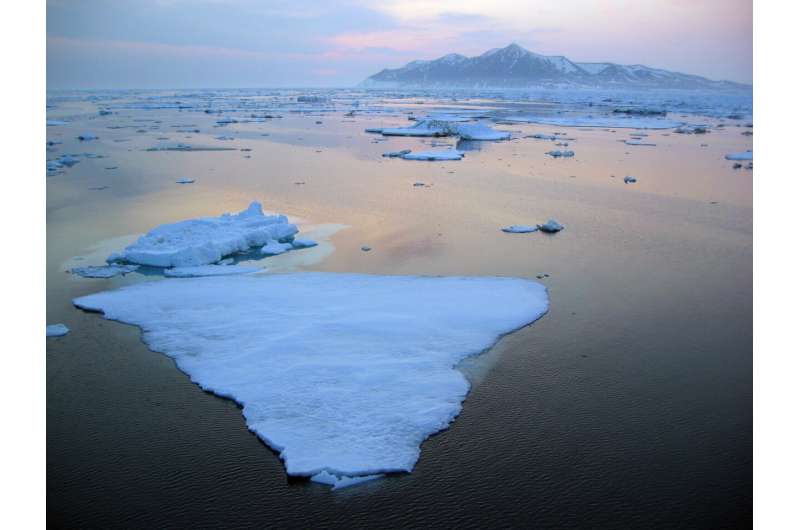Record low level of Bering Sea ice causes profound, widespread impacts

Sea ice in the Bering Sea shrank to its lowest levels in recorded history in 2018, profoundly affecting northwest Alaska residents who depend on marine resources for food, cash and culture, according to a new peer-reviewed study.
"This is an extreme event with immediate and long-lasting repercussions. It's indicative of very rapid change in the entire northern Bering Sea ecosystem. It has ramifications for everyone in the region," said lead author Rick Thoman, a climate specialist at the Alaska Center for Climate Assessment and Policy at the University of Alaska Fairbanks.
The interdisciplinary paper, "The Record Lower Bering Sea Ice Extent in 2018: Context, Impacts, and an Assessment of the Role of Anthropogenic Climate Change," was published by the Bulletin of the American Meteorological Society. It's part of a collection of 21 studies analyzing extreme weather across five continents and one sea, called "Explaining Extreme Events in 2018 from a Climate Perspective."
Thoman and the researchers used remote sensing, climate modeling, government and academic studies, local observations, and media and public reports to reach their conclusions. They examined Arctic sea ice extent dating back to 1850 and compared it to their study period, January to April 2018.
They found that the maximum daily Bering Sea ice was the lowest on record, and the impacts were widespread, including unprecedented weather events, marine wildlife die-offs, and sightings of animals outside of their normal ranges. The ecological changes included the first documented mass strandings of ice-associated seals, a redistribution of thermally sensitive fish, and a multispecies die-off of seabirds due to starvation.
Persistently warm winter weather contributed to poor ice conditions that resulted in a fatal accident on the Kuskokwim River ice road. Retreating and fractured sea ice during a late February storm led to ice-laden flooding that caused a power outage and infrastructure damage on Little Diomede Island, the study says.
More than 50 reports of unusual events related to weather and marine wildlife were collected by the Local Environmental Observer Network. The researchers attribute the record-low sea ice to human-caused climate change, the symptoms of which include a warmer ocean, later arrival of sea ice and more frequent storms than in the pre-industrial era. These conditions could be typical in less than 20 years, Thoman said.
More information: The Record Low Bering Sea Ice Extent in 2018: Context, Impacts, and an Assessment of the Role of Anthropogenic Climate Change. Bulletin of the American Meteorological Society. DOI: 10.1175/BAMS-D-19-0175
Journal information: Bulletin of the American Meteorological Society
Provided by University of Alaska Fairbanks




















